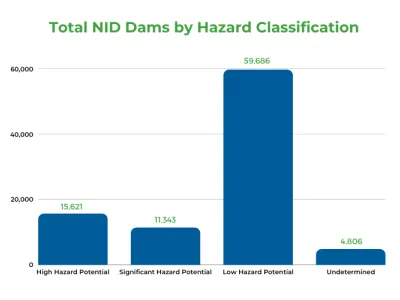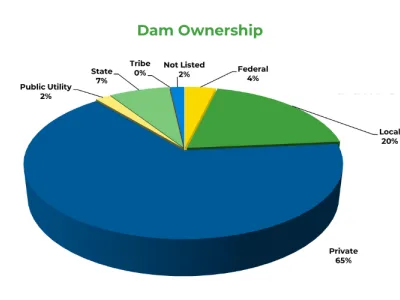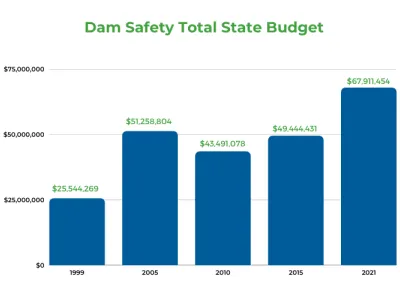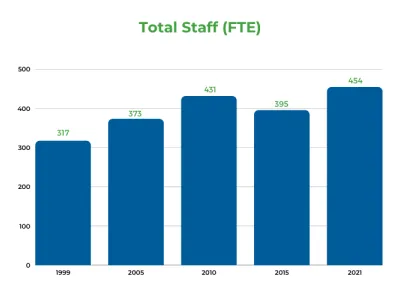Frequently Asked Questions
General Questions
- What is the hazard potential classification system for dams? What does it mean for a dam to be high hazard?
- Are emergency action plans required?
- What are the top issues facing the dam community?
- Where can I find state by state statistics and information about state-specific dam regulators?
- What is the difference between a dam owner and a dam regulator?
- What is the difference between floodplain maps and dam failure flood inundation maps?
- What is the difference between a component failure and a beach failure?
- What is the National Inventory of Dams (NID)?
- What are some other helpful online resources?
Public Safety and Low-Head Dams
- What is a hydraulic jump or roller? How does it work and why is it dangerous? What happens if someone gets caught in one?
- Why do low head dams exist?
- Why don't we just remove all these dams?
- What can I do to stay safe around a dam?
- What can I do to help?
General Questions
What is the hazard potential classification system for dams? What does it mean for a dam to be high hazard?
Common practice among federal and state dam safety offices is to classify a dam according to the potential impact a dam failure (breach) or mis-operation (unscheduled release) would have on upstream and/or downstream areas or at locations remote from the dam. The existing classification systems are numerous and vary within and between both the federal and state sectors. Although differences in classification systems exist, they share a common thread: each system attempts to classify dams according to the potential impacts from a dam failure or misoperation, should it occur. Most agencies use a variation on the following terminology:
High Hazard
Dams assigned the high hazard potential classification are those where failure or mis-operation will probably cause loss of human life.
Significant Hazard
Dams assigned the significant hazard potential classification are those dams where failure or mis-operation results in no probable loss of human life but can cause economic loss, environmental damage, disruption of lifeline facilities, or can impact other concerns. Significant hazard potential classification dams are often located in predominantly rural or agricultural areas but could be located in areas with population and significant infrastructure.
Low Hazard
Dams assigned the low hazard potential classification are those where failure or misoperation results in no probable loss of human life and low economic and/or environmental losses. Losses are principally limited to the owner's property.
Are emergency action plans required?
For state-regulated dams, it depends on the laws and regulations within each state. Some states require emergency action plans for high-hazard potential dams and some do not. As of 2016, 79 percent of state-regulated High-Hazard Potential dams have an EAP. ASDSO's goal is 100 percent. Please visit the state pages for more information about individual state programs.
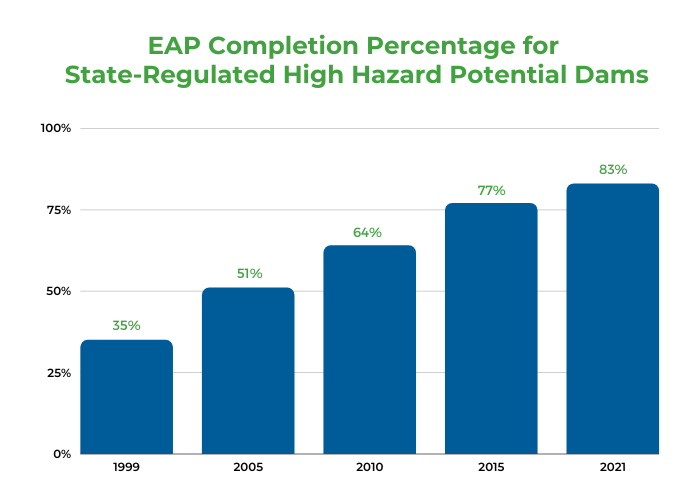

What are the top issues facing the dam community?
The top issues facing the dam community are the following:
- Risk of failure
- Increasing hazard
- Lack of financing for and attention to maintenance, upgrade and repair
- Lack of adequate authority and resources for state dam safety programs
- Lack of emergency preparedness in case of failure
- Lack of public awareness
Read more about these issues in the Roadmap to Reducing Dam Safety Risks section.
Where can I find state by state statistics and information about state-specific dam regulators?
State by state statistics and information about state-specific dam regulators are available in the 2018 State Dam Safety Program Statistics and State Dam Safety Performance Reports, which can be accessed through our state map.
Here are some important statistics to note:
- Most dams listed in the NID are classified as low-hazard potential (Graph 1).
- The vast majority of US dams are privately owned (Graph 2).
- Total budgets for state dam safety programs have rebounded somewhat from the 2008 economic downturn when many programs experienced cuts in funding as state budgets struggled in general (Graph 3) (Graph 4). Staffing did see an increase in 2017 (following a slight decrease in 2015), and it has remained relatively steady in recent years with an overall increasing trend since 1999 (Graph 5).
What is the difference between a dam owner and a dam regulator?
A dam owner is ultimately responsible and liable for a dam under their ownership. Owners can be private citizens or companies, quasi-governmental bodies, state or local governments or federal agencies. Approximately 65% of dams in the United States are privately owned, while about 20% are owned by local governments, 7% by state government, 4% by federal government, and 4% by utilities. Dam Owners are responsible for complying with State and Federal regulations and the significant financial undertaking of dam ownership, including operating and maintaining their dam in a safe condition, upkeep, repair, rehabilitation, or replacement. In addition, dam owners are typically responsible for losses downstream (life, property, lifelines, environmental) caused by uncontrolled releases, incidents, or dam failures. Dam owners may also be responsible for losses upstream of the dam in terms of property damages resulting from the flooding of areas outside of their flowage rights.
A dam regulator is responsible for enforcing dam safety program policies. Enforcement often includes performing or reviewing safety inspections, reviewing plans for new construction or rehabilitation, and maintaining a broad outlook on the construction, operation, and upkeep of dams. Regulators work for the state or federal government. Most dams in the United States - about 70 percent - are regulated by state agencies. All states have regulatory programs in place except one, Alabama. Federal agencies regulate about 14 percent of dams. The remaining percentage are unregulated due to state or federal exemptions.
What is the difference between floodplain maps and dam failure flood inundation maps?
Floodplain maps show the area expected to be inundated by floodwaters due to runoff from a rainfall event of a particular frequency from a riverine source. For example, Flood Insurance Rate Maps (FIRMs) published by the Federal Emergency Management Agency (FEMA) typically show the 1-percent-annual-chance (100-year) floodplain and sometimes a 0.2-percent-annual-chance (500-year) floodplain. The 1-percent-annual-chance floodplain is the area inundated by a flood having a 1-percent chance of being equaled or exceeded in a given year. FIRMs are utilized by communities who are participants in the National Flood Insurance Program to guide and regulate development. They are also utilized to determine flood insurance purchase requirements and rates.
Dam failure flood inundation maps show the estimated area expected to be flooded due to a failure or an uncontrolled release from a dam. These maps may consider different failure scenarios such as a non-rainfall-induced failure, also known as a sunny day or fair weather failure, or failure during a rainfall event. Dam failure flood inundation areas can be much larger than the 1-percent-annual-chance floodplain. The flood is more like a wave than a steady current and can have great power and force. Dam failure flood inundation maps are utilized by engineers and emergency managers to determine warning and evacuation areas downstream of a dam. It is important to note that dam failure flood inundation maps do not reflect the safety or integrity of a dam. Dams that meet safety regulations and are operated and maintained well may still have a dam failure flood inundation map.
What is the difference between a component failure and a breach failure?
A component failure is a localized failure of a feature of the dam that does not result in a breach of the dam or an uncontrolled release. Component failures require immediate attention and may lead to a breach failure if not properly corrected. A breach failure in an uncontrolled release from the reservoir generally resulting in the discharge of all impounded water.
What is the National Inventory of Dams (NID)?
The U.S. Army Corps of Engineers maintains the National Inventory of Dams (NID) to help compile national data on dams in the United States. The NID lists over 90,000 dams. State and Federal regulatory agencies submit data to the NID.
The NID gives national and state by state information on the current state of dams. To be a part of the NID, the dam must either be: of high- or significant-hazard potential classification, equal or exceed 25 feet in height and exceed 15 acre-feet in storage or equal or exceed 50 acre-feet storage and exceed 6 feet in height.
To access the site visit: https://nid.sec.usace.army.mil/#/
What are some other helpful online resources?
- Federal Emergency Management Agency - National Dam Safety Program
- United States Department of Homeland Security - Dams Sector
- United States Army Corps of Engineers - National Inventory of Dams
- American Society Of Civil Engineers - Report Card on Dams
Public Safety and Low Head Dams
What is a hydraulic jump or roller? How does it work and why is it dangerous? What happens if someone gets caught in one?
The boil, hydraulic jump, hydraulic roller, or simply hydraulic is a recirculating current that forms at and near dams. As water spills over the dam or down the spillway and into the river below, a current is created that spins anything caught in it in a circle, from the top of the water, back towards the dam, down along the bottom, and back up to the top. The current is extremely strong and hard to escape and is a leading cause of drowning deaths near dams. If someone gets caught in the current and is unable to escape it, they will recirculate, being tossed around until they are pulled from the current or the water pushes them away.
Much more information, including more detailed explanations of the way the hydraulic forms and flows, is available on the Public Safety Around Dams page and the Public Safety Hazards page.
Why do low head dams exist?
Low head dams serve a number of purposes. Historically, a low head dam was typically built to raise water levels upstream and regulate the flow of rivers to help water-powered mills run. While many of these mills no longer exist, the dams created for them still do. Other purposes include irrigation, electricity generation, water utilities, and upstream recreation. Although it is true that some dams no longer are needed to perform their original function, many other low head dams are still vital parts of our nation's infrastructure.
Why don't we just remove all these dams?
Removal of these dams is very expensive, and can often have very serious effects on the economy and environment in the surrounding area. Additionally, as stated before, many of these dams serve vital purposes in our infrastructure and cannot be removed. However, there are a number of ways that dams can be remodeled and retrofitted to make them safer, including by adding new structures that break up the flow of water over the dam and eliminate some of the risks of creating a hydraulic roller. The decision to remove, remodel, or retrofit a dam is a difficult and intensive one that requires considerable study and financing to determine what the best plan of action is.
If you know of a dam you feel is a candidate for removal, remodeling, or retrofitting, it may benefit you to speak to your state dam safety agency.
What can I do to stay safe around a dam?
The most important thing to remember is keep your distance, keep your life. Steer clear of dam structures by recreating further up- or downstream, or portaging your kayak or canoe around the dam. Dams are not intended to be playgrounds, and pose many risks. Always be aware of your surroundings, know the location of dams, stay away from dams, and wear a personal floatation device such as a life jacket.
What can I do to help?
If you are interested in learning more about low head dam safety or getting involved, visit the Public Safety Around Dams page and get in touch with your state dam safety agency.
